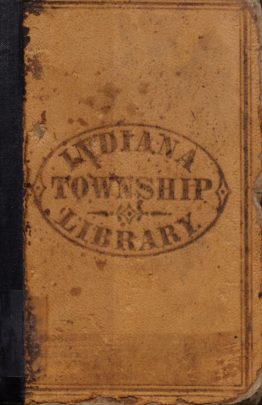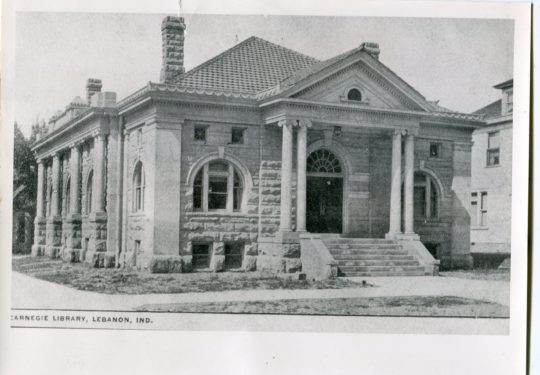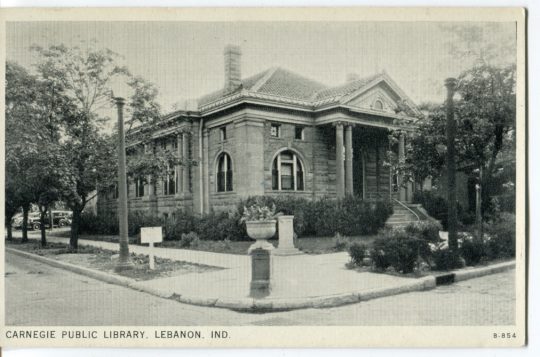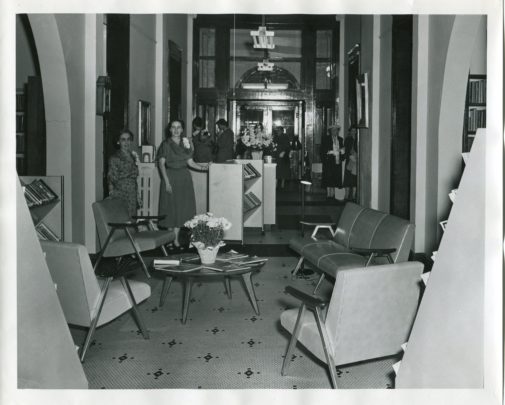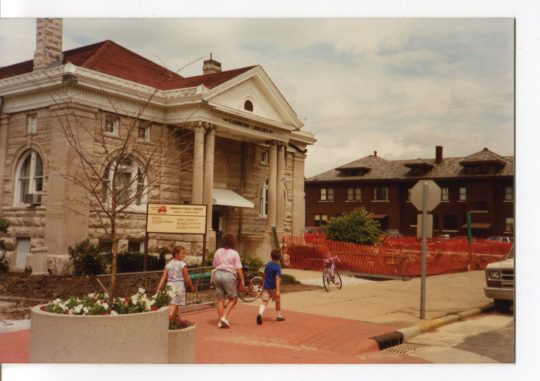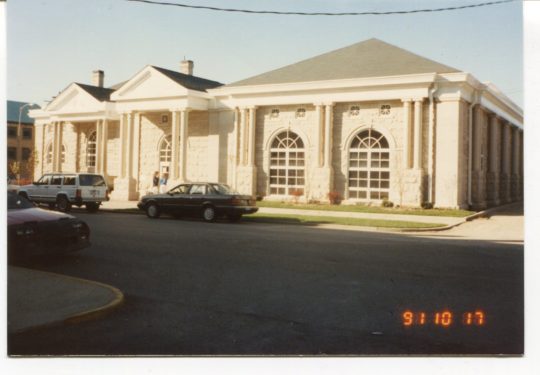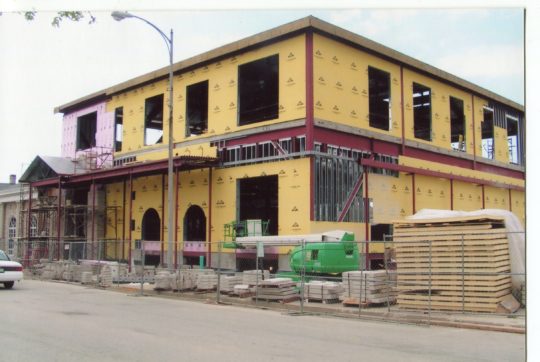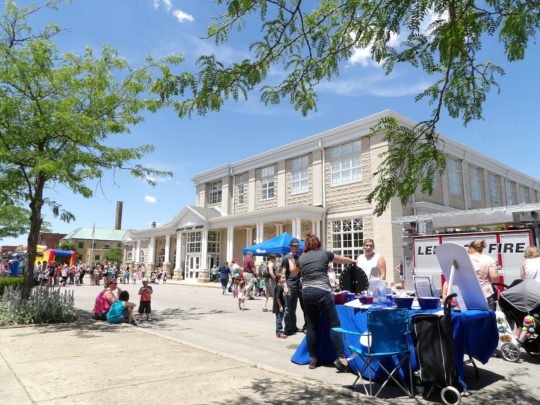About Lebanon
Public Library
Enriching our Community through Learning, Exploring, and Creating.
The Lebanon Public Library (LPL) has served the community of Lebanon, Indiana, since 1905. Over the years, it has grown and developed in many ways, but it has remained committed to providing for its patrons’ literary and informational needs.

Library History
Origins
LPL traces its origins to a sermon delivered by Rev. Demetrius Tillotson on September 7, 1902, in which he suggested the need for a city library. The city of Lebanon had never operated a public library, though the community had been served by the Center Township library (part of a system of township libraries created by the Indiana General Assembly in 1852), the library of the Maclure Working Men’s Institute (one of a number of institutes in Indiana funded by the will of William Maclure), and private library associations. However, these libraries did not long endure.
In October 1902, a number of interested citizens met in the office of Richard Harney, Superintendent of County Schools, to take action on Tillotson’s proposal. The meeting convened committees to collect subscriptions to purchase a site and to seek funding from Andrew Carnegie for constructing the building. The library board was organized October 25. For a location, the community favored the northeast corner of the intersection of Washington and Meridian streets and raised sufficient subscriptions to purchase the site. Carnegie initially offered $12,500 for the building’s construction but later increased the donation to $15,000. The board solicited architectural designs and selected that of C. A. Krutsch & Co. of Indianapolis and contracted Charles J. Andrews of Shelbyville to construct it.
Work on the library building began in July 1903, but construction proceeded slowly. The cornerstone was not laid until April 13, 1904, and the building was not finished enough to be used until May 1905. In June 1905, the board decided to delay opening no longer, despite the fact that Andrews was not completely finished. The library opened on the evening of June 7 with an informal open house, which included a “book shower” in which visitors added about 190 volumes to the library’s collection. The next day, June 8, 1905, the library began its first full day of service.
Early Years
In its early years, the library proved its value to the community. Within twenty-four months, it had issued over 1,300 reader cards and made about 39,000 loans. Richard Harney operated the library in accordance with the widely held philosophy that libraries should attempt to mold their communities’ reading habits, and the board commended his choice of literature for the collection. However, Harney found, as did many contemporary librarians, that he could not force patrons to conform to his notions of literary taste.
Harney died unexpectedly in 1909 and was succeeded by Cora Bynum, a respected member of Lebanon’s community. Bynum shared Harney’s belief that part of a librarian’s job was to raise its users’ cultural level. (She was also feared by some younger patrons for her strict enforcement of library rules.) During her administration, the library hired its first assistant librarians. Bynum also helped LPL pioneer Indiana’s township extension program. A 1911 law established the procedure by which city libraries could extend library privileges to unserved townships, and, within a year, LPL had extended services to Center and Washington Townships–making LPL one of the first libraries to take advantage of the new law.
After the United States entered World War I in April 1917, LPL did its part to support the cause. It participated in a state-wide drive to provide books to the soldiers at Fort Benjamin Harrison. Later, it took part in the American Library Association’s (ALA) national fundraising and book-collecting campaigns. Additionally, the library displayed literature on food preservation and hosted a Red Cross rummage sale in its basement; it also removed items of questionable loyalty from its shelves.
The 1920s was a routine decade for LPL, though it did operate the Lebanon High School library as a branch under an arrangement that lasted from 1923 to 1938. The Great Depression, however, proved a challenge. The library found its budget slashed to less than half those of pre-Depression years. During this time, LPL struggled to add new items to its collection–yet usage continued to increase. As if these challenges were not enough, Bynum died in 1934. Marie Hill (later Neuman), former children’s and reference librarian, succeeded Bynum but resigned a year later following her marriage. Gertrude Cook, who for many years had managed the High School branch, was then appointed head librarian.
Following the attack on Pearl Harbor in 1941, LPL again found itself called upon to support the US war efforts. Just as during the Great War, the ALA led a national book drive, this time called the Victory Book Campaign. The ALA led two such campaigns, in 1942 and 1943, and LPL participated in both. Cook resigned shortly after the war and was replaced by Lucile Shepperd (later Brown).
Second Half of 20th Century
The library experienced several significant changes in the postwar years. In accordance with the Indiana Library Law of 1947, the board converted LPL into a Class I library in 1952; eleven years later, the library officially consolidated Lebanon, Ulen, and Center Township into a single library district. Shepperd followed Cook in emphasizing the collection of material patrons preferred, moving away from Harney’s and Bynum’s philosophy of raising cultural standards. The library building also underwent a few major changes. In 1958, the interior was redecorated and modern furniture replaced fifty-year-old pieces. This project did not add any square-footage, but it improved the library’s atmosphere. 1964 saw the library’s first significant renovation: the front steps were removed so that the entrance could be lowered to street level, and the basement, which had previously only served as storage space, was converted into the children’s department.
Beth Crawford took over as head librarian following Brown’s retirement in 1972. One of Crawford’s most significant contributions was the addition of machines to LPL’s services. During her tenure, the library obtained a photocopier, a microfilm reader, and a film projector. In 1973, the library established the Boone County Historical Documents Repository, renamed the Heritage Room in 1975 and then the Ralph W. Stark Heritage Room in 1980. (Its name changed to the Ralph W. Stark Heritage Center in 2006.) LPL changed leadership twice in the 1980s. Crawford retired in 1982 and was succeeded by Ruth Sparks (later Henderson), who left in 1985 to be replaced by Fern Miner, LPL’s children’s librarian.
By the end of the 1980s, the library had outgrown its space. The board was split over how to solve this problem. Some members wanted to build an addition to the old building, while others preferred to construct a new facility. Ultimately, community support for the original location convinced the board to add on to the old building. InterDesign, Inc., of Indianapolis, provided the plans, which were executed by Steelcore and Johnson-Melloh, both of Indianapolis, and Cundiff Electric, of Greencastle. Groundbreaking for the addition occurred June 8, 1990, and the expansion was dedicated December 8, 1991. For this expansion project, the Indiana Library Federation awarded LPL the award for outstanding library of the year in 1992.
Miner resigned the directorship in 1992 (but remained as Adult Librarian), and Ann Garoffolo, former mayor of Lebanon, took her place. Garoffolo oversaw the implementation of computerization and automation at LPL. The library installed its computer system, barcoded the items in its collection, and debuted its online catalog in 1995, coinciding with its yearlong 90th anniversary celebration. Garoffolo retired at the end of 1995, and Diana Lehr took charge. A year later, Lehr moved to the Danville-Center Township Public Library, and Larry Hathaway, support services assistant at the Indiana State Library, assumed the directorship. During his tenure, the library unveiled its website and began offering internet access as a service. Hathaway moved to the Crawfordsville library in 1999. On January 1, 2000, Kay Martin, who had started at LPL as a clerk before becoming Tech Services Manager and then Children’s Librarian, became library director.
21st Century
By the turn of the 21st century, the library had already outgrown the 1990-91 expansion. To solve this problem, the board again opted to construct an addition to the building. The board selected the design of Odle, McGuire, and Shook of Indianapolis and awarded the construction contract to Terstep Co. of Fishers. Formal groundbreaking took place November 13, 2004, and work on this expansion was completed in phases. The main floor and basement of the new addition opened in January 2006, after which the old section closed for remodeling. This work was completed in less than a year, and the library held a Grand Opening for the expanded building on November 15, 2006. The final phase of the second expansion was completed June 8, 2009, with the dedication of the Avon A/V Department, V. Jay Martin Computer Lab, Bud Falke Conference Room, and program room on the top floor.
Simultaneous with the expansion, the library observed its centennial. The yearlong celebration commenced June 8, 2004, with an open house and roll call of all current and former library staff and board members and concluded September 24, 2005, with the dedication of a time capsule to remain sealed until 2105.
Physical growth has not been the sole focus of LPL during the 21st century. In 2008, LPL became one of the first fifteen libraries to join the Evergreen Indiana Library Consortium, which now connects over one hundred libraries throughout the state. LPL also worked with six libraries to form the eIndiana Digital Consortium in 2010; this enabled the library to expand access to ebooks and digital audiobooks. In 2016, LPL was among the first institutions to join Indiana Digital Preservation (InDiPres), a collaborative dedicated to the preservation of digital collections.
Martin retired in 2014, and, in May 2015, the board appointed Beau Cunnyngham, reference librarian at Tipton Public Library, as director.
Library Directors
- 1904 – 1909: Richard Harney
- 1909 – 1934: Cora Bynum
- 1934 – 1935: Marie Hill/Neuman
- 1935 – 1946: Gertrude Cook
- 1946 – 1972: Lucille Shepperd/Brown
- 1972 – 1982: Beth Crawford
- 1982 – 1985: Ruth Sparks/Henderson
- 1985 – 1992: Fern Miner
- 1992 – 1995: Ann Garoffolo
- 1996 – 1997: Diana Lehr
- 1997 – 1999: Larry Hathaway
- 2000 – 2014: Kay Martin
- 2015 – present: Beau Cunnyngham
Library Board
The Board of Trustees governs the Lebanon Public Library for the taxed library district in the city of Lebanon, the town of Ulen, and Center Township in Boone County, Indiana. Members of the Board are appointed by municipalities within these boundaries and serve as unpaid representatives. Four officers will be elected every January, from the seven appointed Trustees. Meetings typically take place in the library on the fourth Tuesday of every month at 4:15 p.m. However, meeting times can change so please contact the library if you are interested in attending a meeting.
Members
Richard Milam
President
Appointing Authority: Boone County Commissioners
Karen Galvin
Vice President
Appointing Authority: Boone County Council
Lorrie Monn
Secretary
Appointing Authority: Boone County Council
Aaron Wilhoite
Treasurer
Appointing Authority: Boone County Commissioners
Brittany Gunter
Trustee Member
Appointing Authority: Lebanon Community School Board
Kendra Whipkey
Trustee Member
Appointing Authority: Lebanon Community School Board
Jarred Miller
Trustee Member
Appointing Authority: Lebanon Community School Board
Public Notices
Notice of Additional Appropriation
Notice of Determination

